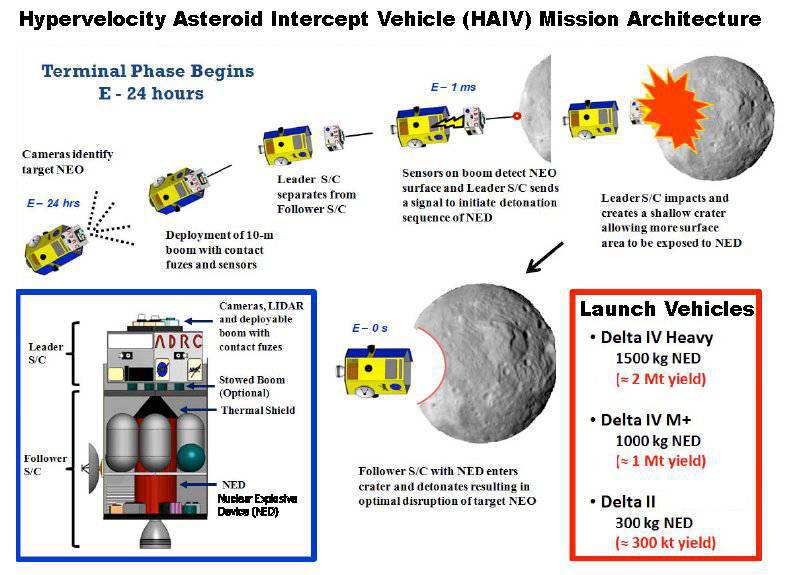NASA ready to withstand asteroids

There is evidence that the Asteroid Hyper Speed Interceptor is selected from 30 similar projects. Now the project will receive funding, which means it can become a reality. Since the first phase (preliminary) of research has already passed, now the developers have to go to the second phase. A grant of 100 thousand dollars has been allocated to it.
It is reported that the Hyper Speed Interceptor itself consists of a pair of spacecraft that are integrated with each other and will be launched by a single rocket into outer space. In the immediate vicinity of the asteroid, the apparatuses are separated, and then one of the apparatuses descends on the surface of a small celestial body, which rushes through the expanses of the Universe. Next is a matter of technology: the first device tells the second its location on the asteroid and makes a “hole” in its surface, where the second device carrying the charge should go. At the same time, according to the research center, the charge will be thermonuclear.
The explosion must be such that the asteroid either goes on a different trajectory or falls apart.
Why two vehicles are needed to smash an asteroid - at first it was not entirely clear, but then the same experts explained that the effectiveness of the explosion would be higher. We need exactly a funnel in the surface to increase the power of the explosion multiply.
The implementation of this kind of project needs additional development. Today, no apparatus can reach a speed of up to 30 km / s, which is needed to “attack” an asteroid. But you still need to think about how at such a gigantic speed to bring the thermonuclear charge safe and sound. Would not the acceleration of a rocket with such a charge on board lead to a “big bach” at the surface of the Earth itself, and where are the guarantees that the pieces of the exploded asteroid will not fly with tripled force towards our planet?
It is the solution of such problems that the new stage of the HAIV project research will be devoted to.
Information